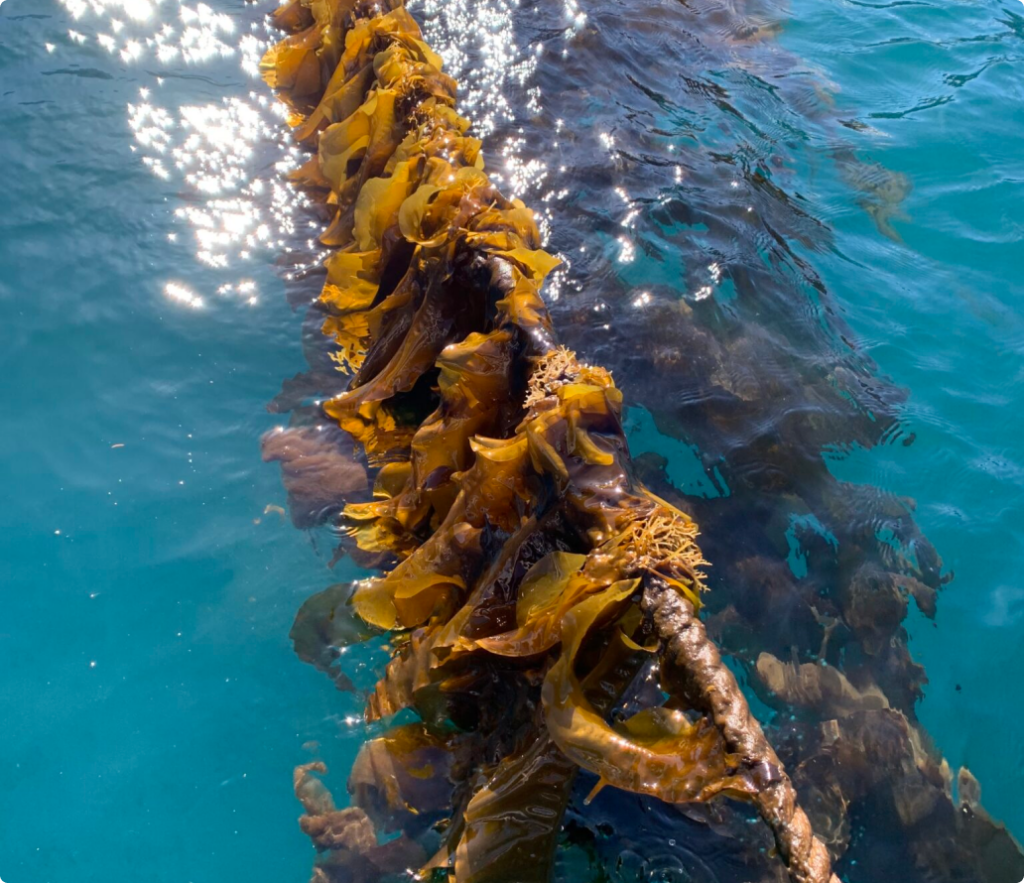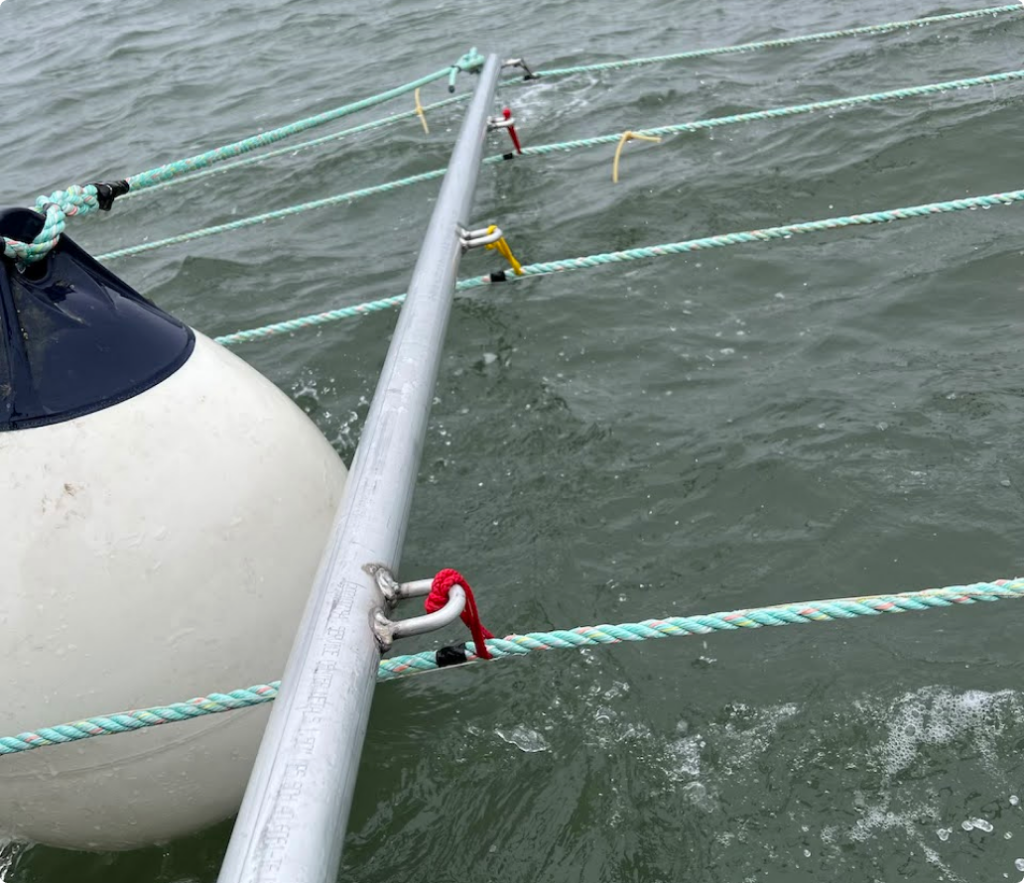If you’re growing bull kelp you may experience the opposite flotation problems of sugar and ribbon kelp. The pneumatocysts (the bulb-like structures at the end of the stipe) are naturally filled with carbon monoxide gas. As the kelp grows, it will want to float toward the surface. To keep the kelp growing optimally and reduce the risk of it getting tangled or damaged at the surface, you may need to add weights along the run of the growline. Some farmers clip on milk jugs full of concrete as the kelp grows. Remember to stay away from leaded line or weights that contain heavy metals the kelp could absorb.
Back to: Monitoring & Maintenance
Over the course of the growing season, you might also notice that the depth of your growlines will change. As your kelp grows, the increase in biomass can cause your lines to sag. If your kelp drops too deep in the water column, it could fall below the optimal photic zone and grow at a suboptimal rate. Making sure that your kelp is 4-8 feet below the surface is something you want to constantly be monitoring. You’ll want your lines to be below the depth where they could be caught by a passing outboard or disturbed by the chop of the waves, but close enough to the surface to capture the maximum amount of light. Another risk of your growline dropping too low in the water column, it’s that it’s also more likely to become fouled by organisms that live near the bottom.

Over the course of the season, you can adjust your line depth by either adding or removing flotation along your growline. You can do this by swapping out smaller or larger growline buoys and adjusting the length of the buoy lines. Some farmers choose to only use corks or very small marker buoys for mid-growline buoys throughout the early part of the season and then swap them out with more substantial buoys when the kelp starts to grow quickly in the spring. If you’re using 5-line arrays, this can often be a good choice for mid-line spreaders. Your choice might depend on how much wind and foul weather you see on your farm. Bad weather can cause buoy lines to tangle with your growlines and strip off kelp.
